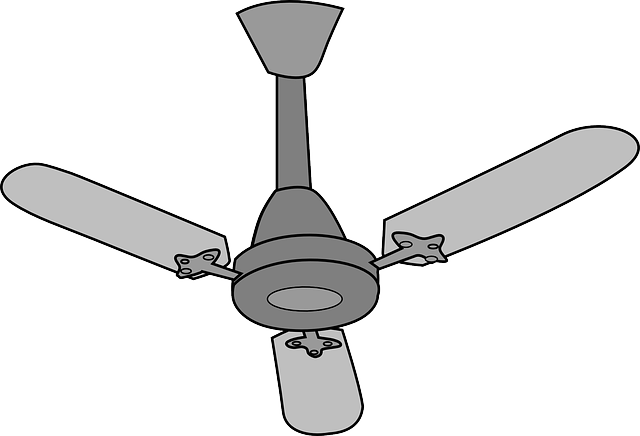|
Target: 10 Questions in 10 minutes |
|||||||||||||||||
1. Which one of the following best describes a 'centripetal' force?
|
|||||||||||||||||
2. Which of the following best describes the changes to speed and velocity (if any) as an object moves in orbit, such as a moon around a planet?
|
|||||||||||||||||
3. A child is riding on a roundabout ride. After 2 seconds, the child has completed half a rotation. What is the angular velocity of this roundabout? |
 |
||||||||||||||||
|
|||||||||||||||||
4. What force keeps an electron in orbit around a nucleus?
| |||||||||||||||||
5-7. The diagram below shows a 4 kg mass being whirled round in a horizontal orbit at the end of a 2m long rope. The velocity of the mass is constant at 10 ms-1.
|
|||||||||||||||||
5. What is the value of the angular velocity?
|
|||||||||||||||||
6. What is the value of the centripetal acceleration?
|
|||||||||||||||||
7. What is the tension in the rope keeping the mass moving in a circle?
| |||||||||||||||||
8-10. A fan used to cool a room rotates at a frequency of 10 Hz. The length of each blade is 0.5 m from the centre of rotation. |
 |
||||||||||||||||
8. What is the period of the fan?
|
|||||||||||||||||
9. What distance has been travelled, in meters, by the tip of the fan blade in this time period?
| |||||||||||||||||
10. The fan slows down to a frequency of 1 Hz. What is the centripetal acceleration on the tips of the blades at this frequency?
| |||||||||||||||||
Question 1:
A centripetal force is a net force that is required to make an object move in a circular path
.
This force is always directed towards the center of the circle and is always perpendicular (at a right angle) to the object's instantaneous velocity.
The correct answer is B. A force acting at right angles to the velocity of a body, that produces circular motion.
Here's why the other options are incorrect:
A is incorrect because centripetal force is not a resistive force acting against motion. It changes the direction of motion, not the speed.
C is incorrect because it describes a centrifugal force, which is an apparent or inertial force experienced by an object in a rotating frame of reference. The centripetal force is a real force.
D is incorrect because a centripetal force only changes the direction of velocity; it does not change the speed of the object.
*These A.I. responses have been individually checked to ensure they match the accepted answer, but explanations may still be incorrect. Responses may give guidance but the A.I. might not be able to answer the question! This is particularly the case for questions based on diagrams, which the A.I. typically cannot interpret.
Grade Gorilla uses Gemini, Deepseek and a range of other A.I. chatbots to generate the saved responses. Some answers have had human intervention for clarity or where the A.I. has not been able to answer the question.
Question 2:
The correct answer is C. constant, changes.
Here's why:
Speed: Speed is a scalar quantity that measures how fast an object is moving, without regard to direction. For an object in a stable circular orbit (like a moon around a planet), the force of gravity acts as the centripetal force, continuously pulling the object towards the center of the circle but doing no work on it. This means the magnitude of the velocity vector (the speed) remains constant.
Velocity: Velocity is a vector quantity that includes both speed and direction. For an object to move in a circle, its direction is constantly changing. Even though its speed is constant, the change in direction means its velocity is also constantly changing. Since velocity is changing, the object is technically accelerating, which is caused by the centripetal force.
*These A.I. responses have been individually checked to ensure they match the accepted answer, but explanations may still be incorrect. Responses may give guidance but the A.I. might not be able to answer the question! This is particularly the case for questions based on diagrams, which the A.I. typically cannot interpret.
Grade Gorilla uses Gemini, Deepseek and a range of other A.I. chatbots to generate the saved responses. Some answers have had human intervention for clarity or where the A.I. has not been able to answer the question.
Question 3:
Explanation
Angular velocity (ω) is the rate at which an object rotates or revolves around a center. It is calculated by dividing the angular displacement (θ) by the time taken (t). The formula is:
ω= θ/t
First, we need to find the angular displacement in radians.
A full rotation is equal to 2π radians.
Half a rotation is therefore ½. 2π = π radians
Now, we can use the given time of 2 seconds to find the angular velocity:
ω= θ/t
=π / 2 = ½ π rad s−1
The correct answer is therefore C.
*These A.I. responses have been individually checked to ensure they match the accepted answer, but explanations may still be incorrect. Responses may give guidance but the A.I. might not be able to answer the question! This is particularly the case for questions based on diagrams, which the A.I. typically cannot interpret.
Grade Gorilla uses Gemini, Deepseek and a range of other A.I. chatbots to generate the saved responses. Some answers have had human intervention for clarity or where the A.I. has not been able to answer the question.
Question 4:
An electron is held in "orbit" around a nucleus by the electric force of attraction between the negatively charged electron and the positively charged protons in the nucleus.
The correct answer is A. An electric force.
Here's why the other options are incorrect:
B. A gravitational force: While gravity does act between the electron and the nucleus, the gravitational force is incredibly weak compared to the electric force at such a small scale and is therefore negligible.
C. A centrifugal force: Centrifugal force is not a real force; it is an apparent or inertial force that an object experiences in a rotating reference frame. The real force is the centripetal force, which in this case is the electric force.
D. Frictional forces: Frictional forces are resistive forces that oppose motion and are not present in this context.
*These A.I. responses have been individually checked to ensure they match the accepted answer, but explanations may still be incorrect. Responses may give guidance but the A.I. might not be able to answer the question! This is particularly the case for questions based on diagrams, which the A.I. typically cannot interpret.
Grade Gorilla uses Gemini, Deepseek and a range of other A.I. chatbots to generate the saved responses. Some answers have had human intervention for clarity or where the A.I. has not been able to answer the question.
Question 5:
Angular Velocity
Angular velocity (ω) is the rate of rotation, measured in radians per second (rad/s). It can be calculated from the linear velocity (v) and the radius (r) using the formula:
v = ω.r, or ω = v/r
Given:
ω= 10 / 2 = 5 rad s−1
This corresponds to answer D.
*These A.I. responses have been individually checked to ensure they match the accepted answer, but explanations may still be incorrect. Responses may give guidance but the A.I. might not be able to answer the question! This is particularly the case for questions based on diagrams, which the A.I. typically cannot interpret.
Grade Gorilla uses Gemini, Deepseek and a range of other A.I. chatbots to generate the saved responses. Some answers have had human intervention for clarity or where the A.I. has not been able to answer the question.
Question 6:
Centripetal Acceleration
Centripetal acceleration (ac) is the acceleration directed towards the center of the circular path. It can be calculated using the formula:
ac = v2 /r
Given:
ac = v2 /r = 102 / 2 =50 m s−2
This corresponds to answer D
*These A.I. responses have been individually checked to ensure they match the accepted answer, but explanations may still be incorrect. Responses may give guidance but the A.I. might not be able to answer the question! This is particularly the case for questions based on diagrams, which the A.I. typically cannot interpret.
Grade Gorilla uses Gemini, Deepseek and a range of other A.I. chatbots to generate the saved responses. Some answers have had human intervention for clarity or where the A.I. has not been able to answer the question.
Question 7:
Tension in the rope
The tension in the rope provides the centripetal force (Fc) needed to keep the mass in circular motion. According to Newton's Second Law, this force is equal to the mass (m) multiplied by the centripetal acceleration (ac):
Fc= m ac
Given:
This corresponds to answer A
*These A.I. responses have been individually checked to ensure they match the accepted answer, but explanations may still be incorrect. Responses may give guidance but the A.I. might not be able to answer the question! This is particularly the case for questions based on diagrams, which the A.I. typically cannot interpret.
Grade Gorilla uses Gemini, Deepseek and a range of other A.I. chatbots to generate the saved responses. Some answers have had human intervention for clarity or where the A.I. has not been able to answer the question.
Question 8:
Period of the fan
The period (T) is the time taken for one complete rotation. It's the inverse of the frequency (f).
T= 1/f
T= 1 / 10 Hz
=0.1 s
This corresponds to answer D
*These A.I. responses have been individually checked to ensure they match the accepted answer, but explanations may still be incorrect. Responses may give guidance but the A.I. might not be able to answer the question! This is particularly the case for questions based on diagrams, which the A.I. typically cannot interpret.
Grade Gorilla uses Gemini, Deepseek and a range of other A.I. chatbots to generate the saved responses. Some answers have had human intervention for clarity or where the A.I. has not been able to answer the question.
Question 9:
Distance travelled by the fan blade tip
The distance travelled by the tip of the blade in one period is the circumference of the circle it traces. The formula for the circumference (C) is:
C=2πr
C=2π×0.5 =π m
This corresponds to answer D
*These A.I. responses have been individually checked to ensure they match the accepted answer, but explanations may still be incorrect. Responses may give guidance but the A.I. might not be able to answer the question! This is particularly the case for questions based on diagrams, which the A.I. typically cannot interpret.
Grade Gorilla uses Gemini, Deepseek and a range of other A.I. chatbots to generate the saved responses. Some answers have had human intervention for clarity or where the A.I. has not been able to answer the question.
Question 10:
Centripetal acceleration
First, you need to find the angular velocity (ω) at the new frequency (f=1 Hz). The relationship between angular velocity and frequency is:
ω=2πf
ω=2π×1 =2π rad s−1
Next, use the formula for centripetal acceleration which is:
ac = v2 /r = rω2
ac =(2π)2 ×0.5 m
ac =4π2×0.5
ac =2π2 m s−2
This corresponds to answer A.
*These A.I. responses have been individually checked to ensure they match the accepted answer, but explanations may still be incorrect. Responses may give guidance but the A.I. might not be able to answer the question! This is particularly the case for questions based on diagrams, which the A.I. typically cannot interpret.
Grade Gorilla uses Gemini, Deepseek and a range of other A.I. chatbots to generate the saved responses. Some answers have had human intervention for clarity or where the A.I. has not been able to answer the question.